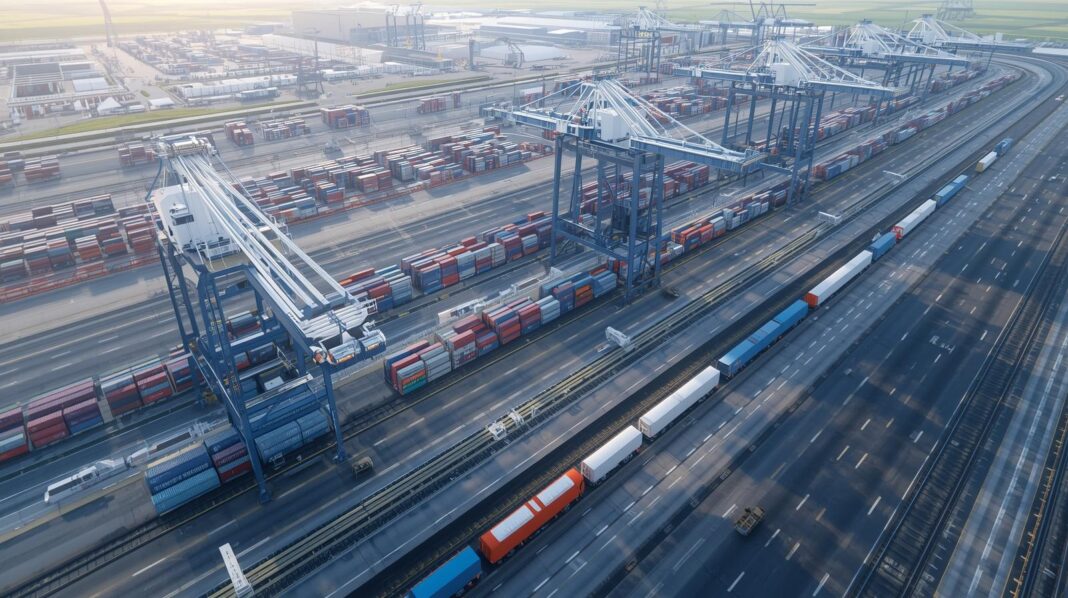South Africa’s logistics sector is on the cusp of a transformative shift with the launch of the Port of Gauteng—a $2.9 billion inland port project set to tackle the nation’s chronic supply chain inefficiencies.
Spearheaded by NT55 Investments, this ambitious initiative aims to ease congestion along the Durban-Gauteng corridor, enhance rail freight capacity, and stimulate economic growth through substantial job creation.
Strategic Location and Capacity
Strategically positioned at the intersection of major rail and road networks, the Port of Gauteng is designed to initially handle 2.8 million Twenty-Foot Equivalent Units (TEUs) annually, with the potential to scale up to 11.2 million TEUs in the coming years.
This scalability positions the port as a critical hub in South Africa’s logistics infrastructure, capable of accommodating growing trade volumes while reducing dependence on road transport.
Economic Impact and Job Creation
The project is expected to generate over 50,000 permanent jobs, providing a significant boost to local employment and regional economic development.
Beyond direct employment, the port is anticipated to stimulate ancillary industries, including warehousing, distribution, and manufacturing, fostering a robust logistics ecosystem that benefits multiple sectors of the economy.
Integration of Rail and Road Freight
A core objective of the Port of Gauteng is to revitalize South Africa’s rail infrastructure, with the goal of shifting a significant portion of freight traffic from congested highways to rail.
This integration is projected to reduce road congestion, lower carbon emissions, and improve the efficiency of freight movement across the country.
Private Sector Involvement and Investment
The project emphasizes private-sector participation as a driver of efficiency and innovation within the logistics sector.
By encouraging collaboration between road and rail operators, the Port of Gauteng aims to tackle systemic inefficiencies and enhance overall logistics performance, offering opportunities for investors and logistics companies alike.
Environmental and Sustainability Considerations
Environmental sustainability is central to the port’s design. The modal shift from road to rail is expected to reduce greenhouse gas emissions and traffic-related pollution, contributing to South Africa’s broader environmental goals.
Additionally, the development includes plans for green infrastructure and sustainable logistics practices to minimize ecological impact while supporting long-term operational efficiency.
Challenges and Future Outlook
While promising, the Port of Gauteng faces challenges such as securing continuous investment, navigating regulatory approvals, and delivering infrastructure on schedule.
Nevertheless, its alignment with national development priorities and its potential to alleviate critical logistics bottlenecks make it a pivotal project for South Africa’s economic future.
Conclusion
The Port of Gauteng represents a visionary step in modernizing South Africa’s logistics infrastructure.
By integrating rail and road freight systems, creating extensive employment opportunities, and championing sustainable practices, the project is poised to become a cornerstone of national economic growth.
With construction slated to begin in 2027, the logistics and transportation sectors are closely watching, anticipating the transformative impact this inland port will have on the country’s trade capabilities and position in the global logistics arena.
Also Read
Africa’s Warehouses are Full: What’s Driving the Boom?
$20 Million Boost: Inspired Evolution Supercharges East Africa’s Cold-Chain Revolution

